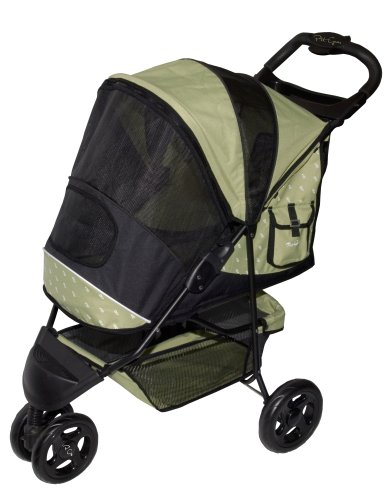Have you ever considered halter training your Labradoodle? If you haven't, you may want to consider this training, as a halter can provide you with much more control over your dog when walking him.
What exactly is a halter? Essentially, it is an extended collar that features a second collar that wraps around the dog's torso behind the front quarters. The halter usually buckles in the front and the back of it has a D-loop that attaches to the lead. By using a halter, you can easily stop your Labradoodle from engaging in negative behaviors you don't approve of. You can stop your dog with more control without having to wrench your animal's neck.
To start halter training your dog, you need to purchase a durable, nylon halter that properly fits your pooch. Like the collar, you should be able to fit two fingers underneath the halter. However, before you place the halter around your Labradoodle, you need to first allow your dog the time to familiarize him/herself with the device before you put it on. This will help ease your dog into the halter without putting up resistance.
You can easily slip the halter onto your dog by placing the collar part over the head, and wrapping the second section behind the front legs. Depending on the type of halter you purchase, the buckle may be plastic or metal. Metal buckles tend to be heavier than plastic. That being said, if you choose plastic, make sure it's made of sturdy material.
Once the Labradoodle is in his/her halter, the D-loop should be positioned on the back. If you have any reservations about putting your dog in the halter, don't forget that it's always a good idea to read the manufacturers instructions that come with the model. This will not only teach you how to properly fit the device to your dog, it will also ensure that no injury comes to you or your pooch.
After you successfully put your Labradoodle in the halter, be sure to praise and reward him/her, and allow them a few minutes to move around and become familiar with the sensation of the device before attaching a leash to it. Once you give a few minutes to your dog to cope, it's time to attach the leash to the halter. To get your dog used to walking with the leash and halter, have an assistant stand 5 feet in front of you and your Labradoodle and offer your dog a treat or favorite toy. When the dog moves forward to his/her reward, he/she will learn that the halter is not constricting as they may have initially thought.
When the dog becomes more familiar walking with the halter, they will discover that they still have freedom, but are also limited should they attempt to engage in behaviors you disapprove of. For instance, if your dog acts aggressively towards a stranger or another dog, you will be able to easily pull them back than if the dog was only wearing a collar. In addition, you have the advantage of pulling up or back on the halter so that the Labradoodle's front feet are pulled clear from the ground to stop the dog from walking on something dangerous such as glass.
As you can see, there are many advantages to halter training your Labradoodle.

 How to Pick the Perfect Dog Name
What would you call this animal?
Cred
How to Pick the Perfect Dog Name
What would you call this animal?
Cred
 How to have a Well Behaved Dog and Save Money at the Same Time
My partner was fixated on getting a pet dog, and cost w
How to have a Well Behaved Dog and Save Money at the Same Time
My partner was fixated on getting a pet dog, and cost w
 Pet Strollers
A pet stroller is a great way to take the furr
Pet Strollers
A pet stroller is a great way to take the furr
 13 Unusual Things You Didnt Know Your Dog Really Enjoys
There are a lot of things th
13 Unusual Things You Didnt Know Your Dog Really Enjoys
There are a lot of things th
 How to Get Rid of Dog Smell in Your Home
As a pet lover, I have a dog
How to Get Rid of Dog Smell in Your Home
As a pet lover, I have a dog